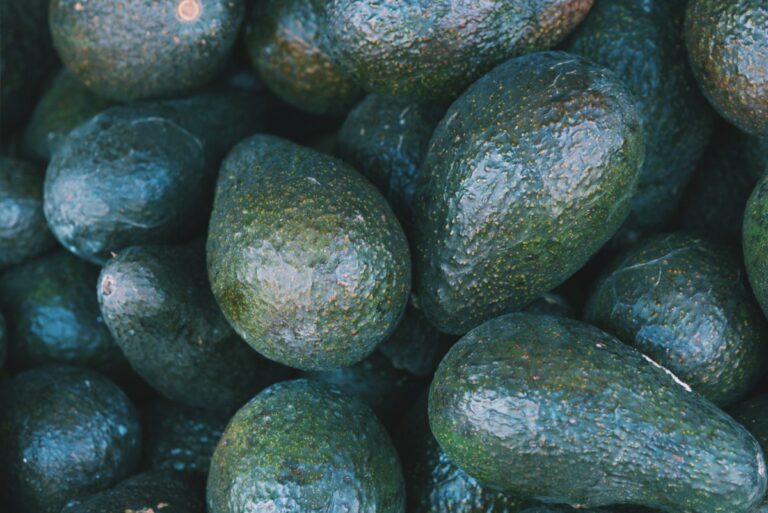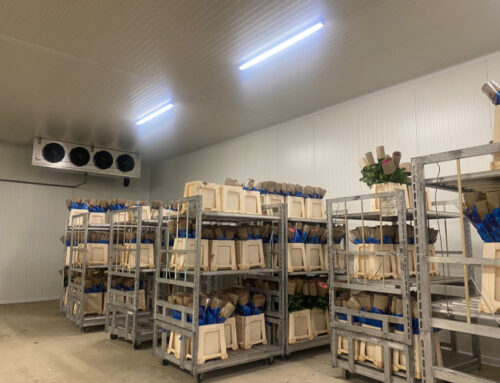Effective cold rooms and cooling techniques for avocado export.
Cooling is the most important operation within the post-harvest chain, as this sets the parameters for fruit quality, as well as shelf life and potential post-harvest defects. Generally, each cooling parameter set at the origin, and the degree to which these have been effectively implemented are critical to the success of the entire product quality.
To ensure the avocados remain in optimal condition, it is crucial to follow each stage of the cooling process meticulously, which includes:
1. Receiving and weighing
The first step is to remove unmarketable fruits if this is not done at the orchard, with any decay, physical injuries, defects caused by insects or rodents, misshapen or immature fruit. The avocados are first received at an ambient packing facility, undergo physical quality check, and sample collection for quality control and maturity testing. Depending on the operations, a GRN traceability code is created by identifying the specific farm the fruit is from. Here, the fruit is accumulated in well-ventilated containers to prevent heat buildup. Fruit is received at ambient, enters the grading line, where it is graded, washed, dried, and inspected. In larger operations, an exporter would typically have flume conveyance to wash the fruit, waxing to prevent fungal infections and use roller brushes to dry the fruit.
Learn more about one of our clients, Kakuzi PLC, an avocado exporter who, in 2020, invested in two InspiraFarms Cooling cold rooms. Each room is 100 square meters and can hold 40 pallets. With pre-cooling capabilities using forced-air fans and evaporators, these rooms can now cool down 40 metric tons of avocado in just 24 hours, with a total cooling capacity of 160 kW. [Read the full story here]
3. Boxing and palletising.
The graded fruit is boxed at ambient temperatures, and palletizing the boxes is done at ambient temperatures or in a refrigerated room (common practise in East-Africa and Southern-Africa respectively).

4. Forced air cooling stage
Forced air cooling is one pre-cooling method, used mainly for bulk produce and palletized produce. Chilled air is forced to flow around each piece of produce. This close contact of chilled air with the product results in rapid, even cooling throughout the mass of produce, making it reach every package on a pallet, crate or bin in a much shorter time. This ensures that cold air circulates evenly around and through the pallets, leading to a consistent temperature throughout the load. This uniformity is essential for maintaining consistent quality across all the avocados in the shipment. Additionally, produce sensors should be used to record the temperature of the fruit in its boxes. While this is the most recommended precooling technique, a regular cold room with sufficient cooling capacity and airflow will work.
InspiraFarms Cooling offers a range of forced-air pre-cooling machines, with a variety of pressures between 150 to 300pa and adjustable airflows, allowing it to match it with a range of cooling machines and to treat up to 20 pallets of product, depending on the crop and other conditions. The suction box is the cheapest and most portable of these precooling solutions. Read more here and get a quote here.
5. Cold storage
The size of this room should be able to hold at least one day’s packing or more if the fruits are dispatched daily. Here, fruits ready to be loaded into reefers are kept.

Once the product is packed, palletised and forced air-cooled, it is moved to the dispatch cold room, where it is maintained at +4°C to +7 °C and has a high relative humidity (85-90%). The exact optimal storage temperature for avocados depends on various factors such as variety, maturity stage and storage time. However, avocados should not be stored below their critical temperature, as chilling injury can occur, causing uneven ripening, susceptibility to decay, and browning. Therefore, regularly monitor the cold room, or utilise remote monitoring tools such as InspiraCoolCloud, a portal that helps you manage your operations, by visualising your data readings (temperature, relative humidity, pulp temperature, door openings, energy, ethylene, CO2, and more) and helps you manage your operation via computer or phone.
6. Dispatch to refrigerated containers
The palletised and cooled avocados are moved from the dispatch cold room into refrigerated containers, ensuring minimal exposure to ambient temperatures during this process to maintain the cold chain. At the same time, reefers should stick to the recommended temperature (+4 to +7°C), while utilising data loggers to ensure that there are no temperature fluctuations.
In conclusion
Postharvest cooling is a critical step to meet the minimum export standards in the fresh produce export market. With the increasing demand for avocados worldwide, it is crucial to have the right cooling technology to preserve the fruit’s quality and extend its shelf life to the last mile. The solutions outlined in this article provide useful options for avocado exporters, but it is essential to select the appropriate technology that suits your specific needs.
Furthermore, it is essential to understand that cooling protocols can vary depending on the destination market, and exporters must work closely with their marketers to ensure their on-farm cooling practices align with market handling conditions. In doing so, exporters can tap into the market, and take advantage of the growing demand and lucrative markets for high quality avocados.



